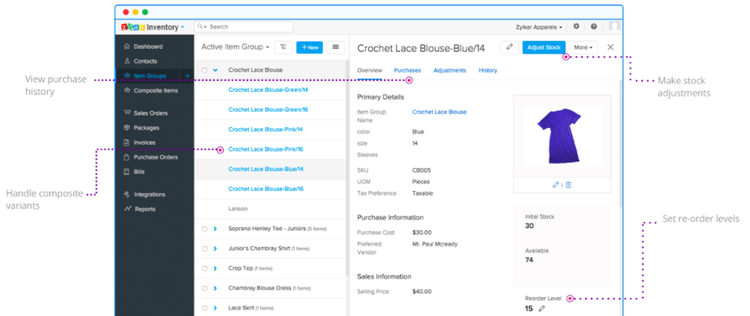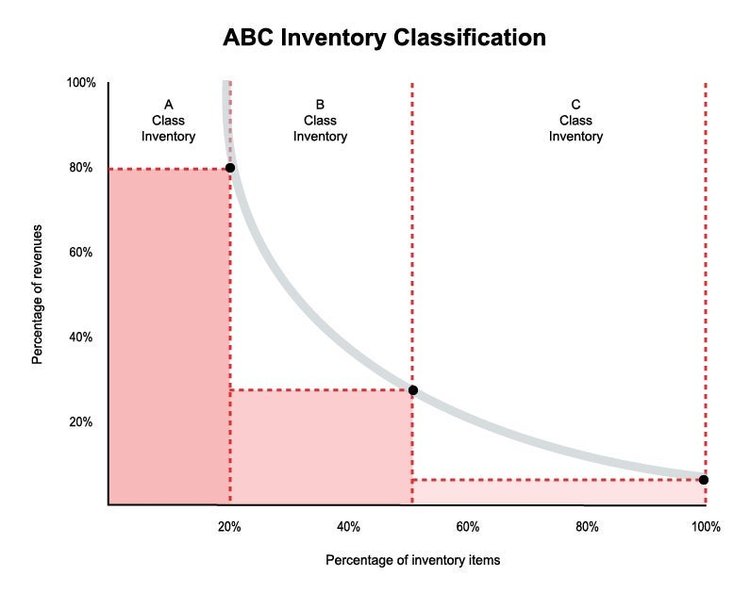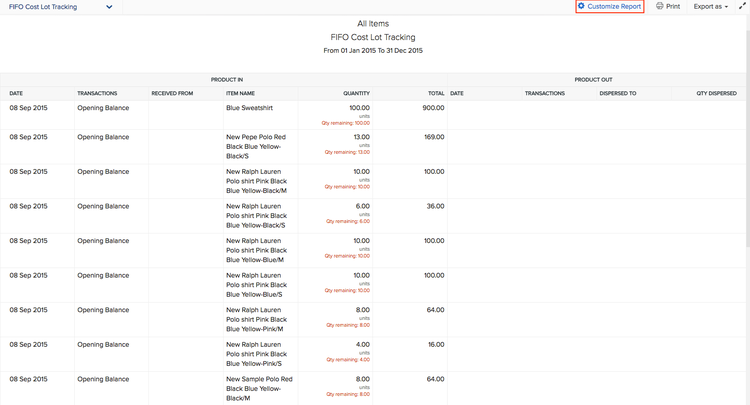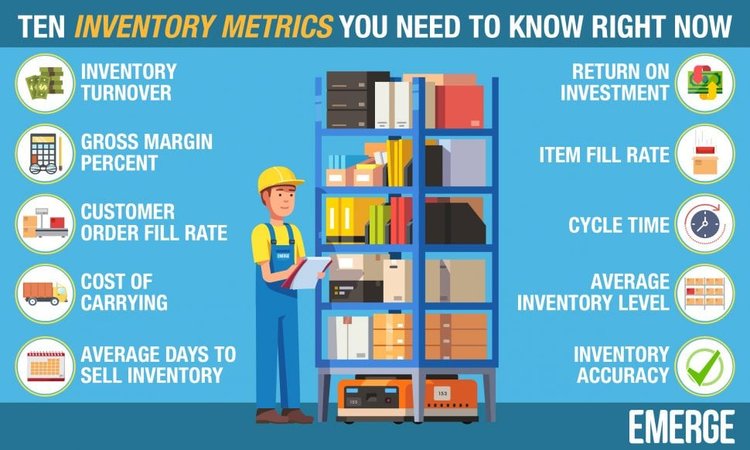It’s often said that time is money, but for retailers, inventory is money.
Your inventory levels will change daily, but if you’re committed to good retail inventory management practices, you must be consistent with your techniques.
In this article, we’ll go through why retail inventory management is important, and how retail management software solutions can benefit inventory management processes.
Overview: What is retail inventory management?
Retail inventory management is essentially the practice of ensuring retail businesses have the right products, in the right quantities, at the right time.
This includes knowing when you’ll receive items from suppliers, how many you have in-store inventory, when you’re running low on products, how to decide about when and what to reorder, and accurately track products, all the while bearing your pricing strategy in mind.
When retail inventory management is done right, retailers don’t suffer from a product surplus or a product shortage, both of which come at a cost. In 2018 alone, U.S. retailers lost $300 billion in revenue due to poor inventory management decisions.
Why is retail inventory management important for retail stores?
For brick-and-mortar stores, good inventory management drives sales, helps deliver a great customer experience, and helps keep budgets in check.
Here are just a few reasons why proper retail inventory management is so important for businesses to get right.
1. Enables you to meet and forecast demand
Demand forecasting is an integral part of inventory management and is what helps future-proof your business.
Businesses that don’t forecast demand and blindly order new stock will find themselves with product surpluses or shortages. When you have too much inventory that’s not selling, your capital is tied up in inventory and holding costs. When your inventory falls short of in-demand products, you’re effectively forcing customers to take their business to your competitors.
Using retail management software, retailers are able to access data and insights on sales history, which helps them predict how much stock they’ll need at a given time. Reports on weekly and monthly sales figures help retailers to only invest in stock when they need to, and they distinguish products that sell well from those that don’t.
2. Provides the basis for a good customer experience
Inventory management not only helps you provide customers with the products they want, when they want them, but it also helps reduce the chances of product picking and shipping errors, and customers receiving damaged goods.
Inventory tracking helps retailers know which stock keeping units (SKUs) they have in inventory, their location, and how many are available. It also helps retailers track and mark damaged or imperfect goods so that they’re not sold on to unknowing customers.
3. Saves retailers money
Good inventory management means better cash flow. It saves businesses money in many ways, including reduced costs on inventory storage, reduced chances of carrying dead stock, and improved demand planning.
5 ways retail management software helps power your inventory management success
Businesses can’t manage inventory with spreadsheets, not if they want to succeed. Retailers using retail management software and retail POS systems have many advantages over retailers who don’t, from helping manage day-to-day business operations to running efficient store inventory control and improving stock management.
Here are a few ways retail software can give your business and inventory management practices a boost.
1. Helps you track all product information
Inventory management features help you create unique product IDs and descriptions and keep track of all types of product information. This makes it quick and easy for retailers to find the products they’re looking for and helps them to distinguish items that are visually similar.
Products often have multiple identifiers, including SKUs, readable via a barcode inventory system, suppliers, lot numbers, etc. Often, however, suppliers will assign their own SKUs and apply a separate product ID to items, which can complicate product tracking and making purchase orders.
Multiple retail software and inventory solutions will allow you to keep track of all product information in one record, which means you can stay organized and maintain coordinated product histories.

Zoho helps keep inventory organized and provides product identifiers. Image source: Author
2. Helps you categorize and classify products in inventory
Inventory control is all about managing products you already have in stock. Inventory classification is crucial in helping retailers identify their most popular and important products. It prevents them from spending too much time and resources on managing products of less importance.
A common and effective inventory classification method is the ABC method, based on the Pareto principle which, when applied to inventory, asserts that 80% of revenue is generated by 20% of a retailer’s products. ABC classification categorizes inventory into three groups:
- Group A: The 20% of products that generate 80% of total revenue.
- Group B: The 30% of products that generate 15% of total revenue.
- Group C: The 50% of products that generate 5% of total revenue.
This type of classification is important as it helps retailers understand which product belongs in which group and how to prioritize inventory purchase orders.
Many retail inventory software solutions can automate ABC analyses, which spares retailers time for other important business operations. The software takes into account factors such as storage value and sales frequency to categorize products.

Using the ABC classification method, retailers can use these groups to help categorize their products based on importance. Image source: Author
Source: Lightspeed software.
3. Helps support the right inventory management system and costing method
There are many types of inventory management systems, and it’s down to you as a retailer to choose which one fits your business.
Many businesses choose to track inventory using the periodic inventory system, which tracks inventory at the end of an accounting period (which can be on a weekly, monthly, quarterly, or annual basis). This is ideal for retailers selling low volume/high ticket price items.
Retail inventory management software can automatically apply other inventory management techniques and inventory costing methods as well.
Zoho Inventory, for example, gives users the option of FIFO cost lot tracking, which tracks your inventory based on the first in, first out system, that assumes a business will sell its oldest inventory first.

Zoho Inventory software allows users to generate a FIFO cost lot tracking report. Image source: Author
4. Helps you understand and monitor inventory metrics
Just as you shouldn’t be tracking inventory by hand, neither should you try to calculate inventory metrics with only a calculator.
Actively tracking inventory metrics with software helps to ensure your inventory processes are running smoothly and efficiently. And if they’re not, the system identifies areas for improvements.
Inventory management software can track these key metrics:
- Inventory turnover ratio
- Item fill rate
- GMROI (gross margin return on investment)
- Shrinkage (to reduce shoplifting and employee fraud)
- Product performance
These key KPIs will demonstrate the health of not just your inventory management practices, but the health of your business overall.

Some examples of the most important inventory metrics retail businesses should track. Image source: Author
5. Helps you set minimum and maximum product quantity levels
Retail inventory management software does all the legwork when it comes to ensuring your inventory levels are correct. Some systems set automatic alerts for user-defined minimum and maximum product quantity levels, which avoids having capital tied up in excess stock and disappointing customers with unavailable stock.
Other systems automatically push purchase orders to suppliers on a set schedule or when you reach your minimum stock level.
Software powers effective retail inventory management
It’s time to do away with spreadsheets and other paper methods for managing your retail inventory.
The best retail software will not only help power your retail store, but will help you successfully manage your inventory. After all, retail relies on having the right stock on hand at the right time, and the more you can automate inventory tasks, the easier inventory management becomes.
Our Small Business Expert
We're firm believers in the Golden Rule, which is why editorial opinions are ours alone and have not been previously reviewed, approved, or endorsed by included advertisers. The Ascent, a Motley Fool service, does not cover all offers on the market. The Ascent has a dedicated team of editors and analysts focused on personal finance, and they follow the same set of publishing standards and editorial integrity while maintaining professional separation from the analysts and editors on other Motley Fool brands.